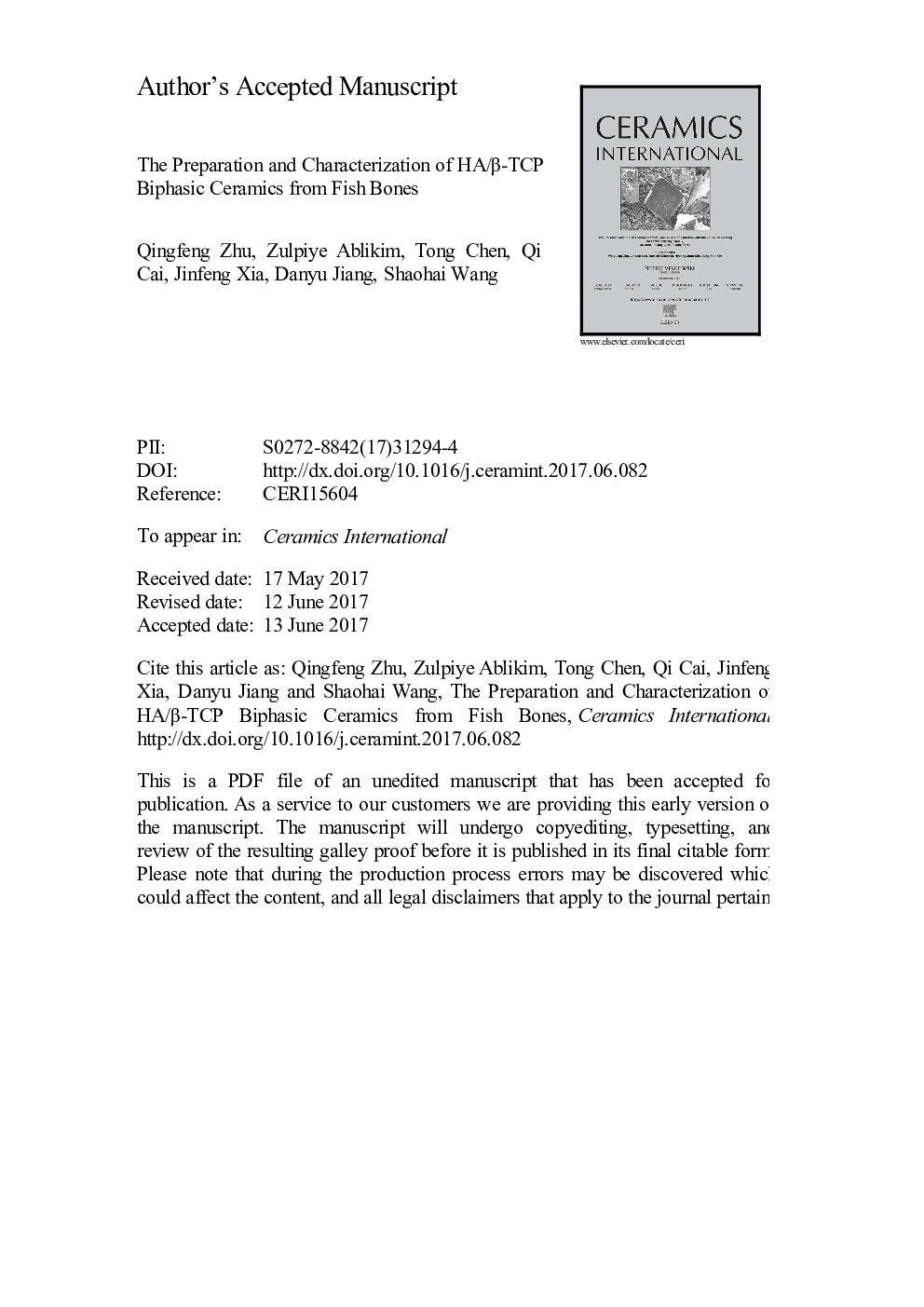| کد مقاله | کد نشریه | سال انتشار | مقاله انگلیسی | نسخه تمام متن |
|---|---|---|---|---|
| 5437519 | 1398174 | 2017 | 38 صفحه PDF | دانلود رایگان |
عنوان انگلیسی مقاله ISI
The preparation and characterization of HA/β-TCP biphasic ceramics from fish bones
دانلود مقاله + سفارش ترجمه
دانلود مقاله ISI انگلیسی
رایگان برای ایرانیان
موضوعات مرتبط
مهندسی و علوم پایه
مهندسی مواد
سرامیک و کامپوزیت
پیش نمایش صفحه اول مقاله

چکیده انگلیسی
The aim of this research is to observe the physicochemical characterization and evaluate the biocompatibility of the HA/β-TCP biphasic calcium phosphate ceramics (BCP) produced from fish bones. In addition, the mechanism of the formation of BCP after calcination of fish bones was discussed. Three kinds of fish bones (Salmo salar, Anoplopoma fimbria and Sardine) were prepared and calcined for one hour at different temperatures ranging from 600 °C to 1100 °C in a muffle furnace. The calcined bones were analyzed by X-ray diffraction (XRD), Fourier transform infrared spectroscopy (FTIR), thermogravimetric analysis (GTA), inductively coupled plasma optical atom emissions spectroscopy (ICP-OES), X-ray fluorescence (XRF) and scanning electron microscopy (SEM). The in vitro cytotoxicity assessment was used to evaluate the biocompatibility of the biphasic ceramics. BCP materials were produced from all kinds of fish bones by calcination above 700 °C, the carbonated hydroxyapatite and multiple trace element were also found in the calcined bones. With the increase of temperature, the ratio of HA/β-TCP varied and the major organic components were progressively removed. The carbonated hydroxyapatite disappeared when temperature rises above 900 °C. Rising temperature also caused crystal growth that eventually gave rise to the increase of the BCP grain size and influenced the mesoporous structure. The BCP materials were confirmed to have no obvious cytotoxicity to mesenchymal stem cells (MSC) in the in vitro cytotoxicity assessment. Calcium-deficient hydroxyapatite(CDHA) may make up the major inorganic constituent of fish bones that could decompose to HA and β-TCP when calcined above 700 °C. 800-900 °C is considered to be the optimal temperature to fabricate BCP materials which contain more β-TCP, carbonated hydroxyapatite and retain distinct mesoporous structure while has good biocompatibility. With the unique composition and structure, these three kinds of fish-bone-derived BCP materials can be further applied to fabricate bioceramic scaffolds for biomedical applications.
ناشر
Database: Elsevier - ScienceDirect (ساینس دایرکت)
Journal: Ceramics International - Volume 43, Issue 15, 15 October 2017, Pages 12213-12220
Journal: Ceramics International - Volume 43, Issue 15, 15 October 2017, Pages 12213-12220
نویسندگان
Qingfeng Zhu, Zulpiye Ablikim, Tong Chen, Qi Cai, Jinfeng Xia, Danyu Jiang, Shaohai Wang,